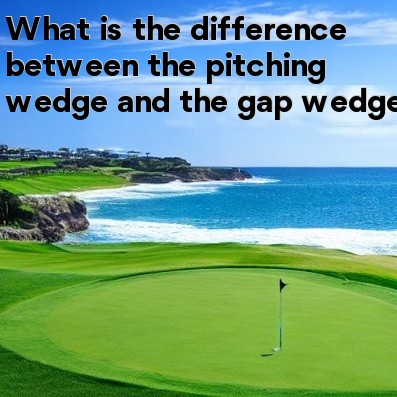
Difference between the Pitching Wedge and the Gap Wedge in Golf
When it comes to golf clubs, there are many different types designed for specific shots and distances. Two commonly used wedges in a golfer's arsenal are the pitching wedge and the gap wedge. While they may seem similar at first glance, there are key differences that make each club unique.
Pitching Wedge
Let's start with the pitching wedge. The pitching wedge is typically one of the highest lofted clubs in a golfer's bag, with a loft angle of around 46-48 degrees. It is considered a short iron due to its loft and is typically used for approach shots from the fairway or rough.
One of the main characteristics of the pitching wedge is its versatility. It allows golfers to hit higher trajectory shots with a shorter carry distance, making it ideal for shots that require more height and accuracy rather than distance. The pitching wedge is especially useful for shots that need to clear obstacles such as bunkers or water hazards.
Additionally, the pitching wedge comes in handy for chip shots around the green. Its high loft allows for a softer landing, which can help the ball stop quickly on the green. This makes it easier for golfers to control their distance and aim for the hole with greater precision.
Gap Wedge
Now, let's move on to the gap wedge. The gap wedge, also known as the approach wedge or attack wedge, is a club with a loft angle between that of a pitching wedge and a sand wedge. It typically has a loft angle of around 50-53 degrees.
As the name suggests, the gap wedge fills the gap between the pitching wedge and sand wedge in terms of distance. It helps golfers bridge the distance between full shots with the pitching wedge and shorter shots with the sand wedge.
The key difference between the gap wedge and the pitching wedge is the distance it covers. The gap wedge is designed to hit shots that require more distance and control than the pitching wedge. Golfers often use the gap wedge for approach shots when they are too far for a pitching wedge but not far enough for a full swing with a sand wedge.
Furthermore, the gap wedge can be useful in bunker shots. Its slightly lower loft compared to a sand wedge allows golfers to hit shots that travel a bit further while still maintaining some height to get over the lip of the bunker.
Conclusion
In summary, the pitching wedge and the gap wedge are both important clubs in a golfer's bag. While the pitching wedge is versatile and ideal for shorter shots that require accuracy and height, the gap wedge fills the distance gap between the pitching wedge and the sand wedge. Understanding the differences between these two wedges can help golfers select the appropriate club for different situations on the course.





